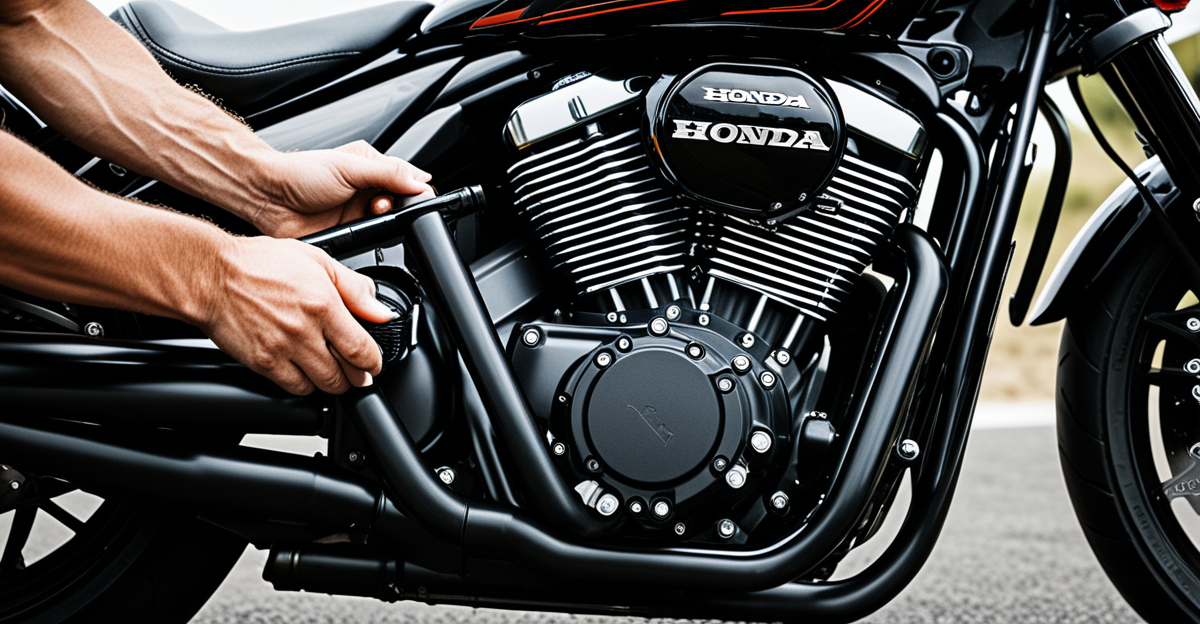Essential Tools and Materials for Honda Fury Oil and Filter Changes
When preparing for Honda Fury maintenance, assembling the right oil change tools and DIY motorcycle supplies is crucial to ensure a smooth and efficient service. Key items include a quality oil drain pan, a socket wrench set preferably with a 17mm socket for the drain bolt, and an oil filter wrench designed to fit the Fury’s filter size. For fluid, use the manufacturer-recommended 10W-40 motorcycle oil, typically around 3.2 quarts for a complete change, along with a new OEM oil filter.
It’s also wise to have clean rags, disposable gloves, and a funnel to reduce spills during the refill. A sturdy jack or lift can help elevate the bike safely to access hard-to-reach areas comfortably. For first-time and experienced riders alike, preparing a checklist before starting ensures no tool or supply is missing, preventing interruptions mid-maintenance.
Also read : Mastering Your Suzuki GSX-R1000: The Ultimate Guide to Essential ABS Adjustment Settings Revealed
Using the correct tools tailored to the Honda Fury prevents damage to parts during removal or installation, underscoring the importance of selecting quality, DIY motorcycle supplies that match the bike’s specifications. This preparation streamlines the process and supports effective, damage-free oil and filter changes.
Step-by-Step Process for Changing Honda Fury Oil and Filter
Changing your Honda Fury oil starts with warming up the engine for 5–10 minutes to loosen contaminants. Next, secure the bike upright with a sturdy lift or center stand. Position your oil drain pan under the 17mm drain bolt, then carefully remove the bolt using the socket wrench. Allow all old oil to drain completely—this usually takes 5–7 minutes.
This might interest you : Essential Guide: Perfecting Suspension Calibration for Your Ducati Hypermotard 939
After draining, replace the drain bolt and tighten it to the manufacturer’s specified torque, typically around 30 Nm. Remove the old oil filter using the oil filter wrench, turning counterclockwise. Before installing the new oil filter, lightly coat its rubber gasket with fresh 10W-40 oil to ensure a secure seal. Screw on the new filter by hand until snug, then give it an additional ¾ turn.
Refill the engine with approximately 3.2 quarts of the recommended oil through the filler hole, using a funnel to avoid spills. After filling, check the oil level with the dipstick and top off as needed. Start the engine and let it run for a minute to circulate oil, then recheck for leaks around the drain bolt and filter. This stepwise Honda Fury oil change routine ensures optimal engine protection and longevity.
Safety Precautions and Best Practices
Before diving into Honda Fury maintenance, prioritizing motorcycle maintenance safety is essential. Always work in a well-ventilated, flat area to prevent accidental spills or inhalation of fumes. Wear disposable gloves and goggles to protect against hot oil and chemicals. When lifting the bike, use a reliable stand or jack to stabilize it securely.
Proper oil disposal is critical for environmental safety. Collect used oil in a sealable container and never pour it down drains or onto soil. Most auto shops or recycling centers accept used motor oil; this prevents contamination and legal issues.
To avoid frequent oil change problems, double-check that all bolts, especially the drain bolt, are tightened to manufacturer torque specs (around 30 Nm). Always inspect for leaks after completing maintenance. A clean workspace and organizing all necessary oil change tools beforehand reduce mistakes and spillage.
Following these Honda Fury tips promotes safe, responsible, and efficient DIY motorcycle maintenance—protecting both you and the environment while ensuring your bike’s performance stays optimal.
Expert DIY Hacks for Efficient Honda Fury Maintenance
Maximizing efficiency during Honda Fury maintenance begins with smart preparation. One effective DIY motorcycle hack is warming the engine just enough to thin the oil, enabling quicker drainage. Using a magnetic drain pan can catch stray metal particles, helping maintain engine health beyond just oil changes.
Shortcuts like pre-loosening the drain bolt before warming the engine save time and reduce hassle. If an oil filter is stubborn, applying rubber grip tape or using a strap wrench grants better traction, preventing damage. For cleaner refills, a flexible funnel with a spout helps avoid spills—an essential part of neat oil change tools.
Organizing all DIY motorcycle supplies in advance—gloves, rags, wrenches—within arm’s reach keeps the process smooth and focused. Another tip is placing absorbent mats beneath the bike to catch drips. This reduces cleanup time and protects your workspace.
Incorporating these efficiency hacks into your routine enhances safety and saves time, making Honda Fury oil change steps and other maintenance tasks quicker without compromising care. Such motorcycle maintenance tricks empower even first-timers to tackle services like a pro.
Troubleshooting and Solving Common Issues
A frequent challenge in Honda Fury maintenance is dealing with stuck oil filters or seized drain bolts. When an oil filter resists removal, applying a strap wrench or rubber grip tape enhances traction without damaging the filter housing. For stubborn drain bolts, using a correctly sized socket wrench with steady, controlled torque helps prevent rounding off the bolt head, a common cause of costly repairs.
Identifying leaks post-maintenance requires thorough inspection around the drain bolt and oil filter. Look for fresh oil seepage or damp spots after the engine has circulated oil briefly. Tightening bolts to specified torque—about 30 Nm—is critical to avoiding leaks without overtightening, which may strip threads or crack components.
If leaks persist despite proper torque and installation, inspect the oil filter gasket for damage or improper sealing. Replacing a defective gasket or using OEM filters recommended for the Fury ensures a reliable seal.
In cases where DIY attempts fail or damage occurs—such as stripped bolts or persistent leaks—it’s prudent to consult a professional mechanic. Timely troubleshooting and adherence to Honda Fury oil change steps prevent longer-term engine damage and costly maintenance setbacks.






